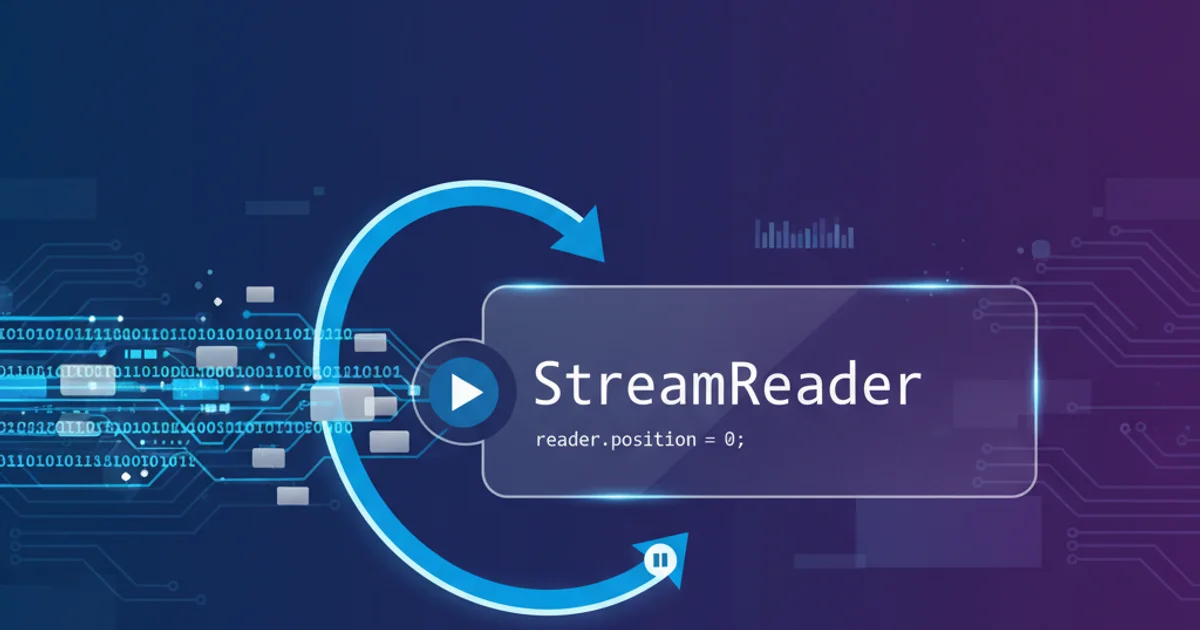What is the third byte of a hex number? Scope: reading an API
Categories:
Understanding Hexadecimal Bytes: Extracting the Third Byte from an API Response

Learn how to interpret hexadecimal values, specifically focusing on extracting and understanding the 'third byte' in the context of API responses and binary data.
When working with APIs, especially those that interact with hardware or low-level systems, you'll often encounter data represented in hexadecimal format. A common task is to extract specific parts of this data, such as a particular 'byte'. This article will demystify what a 'third byte' means in hexadecimal context and provide practical C++ examples for extracting it from an API response.
Hexadecimal Basics and Byte Representation
Hexadecimal (base-16) is a number system that uses 16 distinct symbols: 0-9 and A-F. Each hexadecimal digit represents 4 bits of binary data. A 'byte' consists of 8 bits. Therefore, two hexadecimal digits combine to represent one byte. For example, 0xFF represents the decimal value 255, which is one byte. When you see a longer hexadecimal string, it's typically a sequence of bytes.
flowchart TD
A["Hexadecimal String (e.g., 'AABBCCDD')"] --> B{"Split into Bytes"}
B --> C["Byte 1 (AA)"]
B --> D["Byte 2 (BB)"]
B --> E["Byte 3 (CC)"]
B --> F["Byte 4 (DD)"]
E --> G["Target: Third Byte (CC)"]Visualizing a hexadecimal string as a sequence of bytes
Identifying the Third Byte
In a hexadecimal string, bytes are read from left to right, with each pair of hexadecimal characters constituting one byte. If you have a hex string like 0xAABBCCDD, the breakdown is as follows:
AAis the first byte.BBis the second byte.CCis the third byte.DDis the fourth byte.
So, to find the 'third byte', you need to locate the fifth and sixth characters of the hexadecimal string. It's crucial to remember that this assumes the string represents a contiguous sequence of bytes without any delimiters or special formatting within the byte sequence itself.
Extracting the Third Byte in C++
To extract the third byte from a hexadecimal string in C++, you can treat the string as a sequence of characters and extract the relevant substring. Then, convert this two-character hex substring into its integer equivalent. The std::string::substr method is ideal for extracting the characters, and std::stoi with base 16 can convert it to an integer.
#include <iostream>
#include <string>
#include <iomanip>
int main() {
std::string hexString = "0xAABBCCDD"; // Example API response hex string
// Remove "0x" prefix if present
if (hexString.rfind("0x", 0) == 0) {
hexString = hexString.substr(2);
}
// Check if the string is long enough for a third byte (at least 6 hex chars)
if (hexString.length() < 6) {
std::cerr << "Error: Hex string too short to contain a third byte." << std::endl;
return 1;
}
// Extract the substring for the third byte (characters at index 4 and 5)
// Remember: 0-indexed. First byte is chars 0,1. Second is 2,3. Third is 4,5.
std::string thirdByteHex = hexString.substr(4, 2);
// Convert the hex substring to an integer
int thirdByteValue = std::stoi(thirdByteHex, nullptr, 16);
std::cout << "Original Hex String: " << hexString << std::endl;
std::cout << "Third Byte (hex): " << thirdByteHex << std::endl;
std::cout << "Third Byte (decimal): " << thirdByteValue << std::endl;
std::cout << "Third Byte (binary): 0b";
for (int i = 7; i >= 0; --i) {
std::cout << ((thirdByteValue >> i) & 1);
}
std::cout << std::endl;
return 0;
}
C++ code to extract and convert the third byte from a hexadecimal string.
Considerations for API Responses
When reading from an API, the hexadecimal data might come in various forms:
- Plain Hex String: As shown in the example, a direct string like
"AABBCCDD". - Byte Array/Vector: The API might return a
std::vector<unsigned char>or similar, where each element is already a byte. In this case, accessing the third byte is simplydata[2](due to zero-indexing). - Binary Stream: For very low-level APIs, you might receive raw binary data. You'd read 8 bits at a time to form bytes.
Always refer to the API documentation to understand the exact format of the data returned. The method of extraction will depend heavily on this format.
sequenceDiagram
participant Client
participant API
Client->>API: Request Data
API->>Client: Send Hex String "0xAABBCCDD"
Client->>Client: Parse String
Client->>Client: Extract Substring "CC" (Third Byte)
Client->>Client: Convert "CC" to Decimal (204)
Client->>Client: Use Third Byte ValueSequence diagram of client-API interaction for hex data extraction